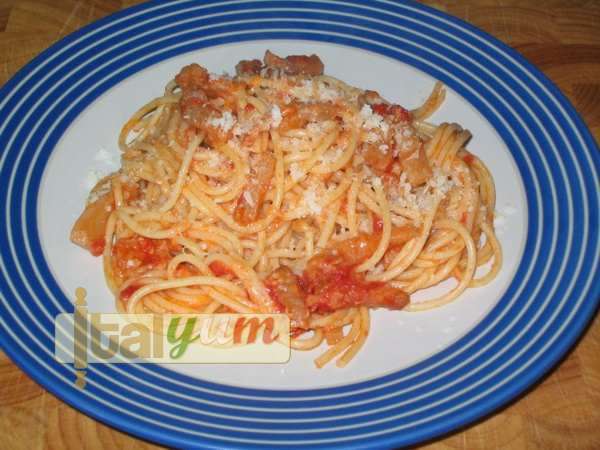
Amatrice Spaghetti (Spaghetti all’amatriciana)
This classic dish has its origins in central Italy; more precisely from the town of Amatrice, in the province of Rieti (Lazio region). At the entry of the town there’s a welcome sign post saying:AMATRICE955 m s.l.m. (955 meters above the sea level)citta’ degli spaghetti all’amatricianaThere is lot of debate around this dish name because local purists say that the dish should be called “matriciana” and not “amatriciana”, since the local people of Amatrice are called “Matriciani”. But, the same purists say that spaghetti should be used for this dish and not bucatini. The debate is so heated that someone has also created a specific website matriciana.com, where they make a big point about their views. It is believed that the ancient version of dish was created by the local shepherds, a few centuries ago. Initially, there was no tomato in the amatriciana sauce, because at that time people probably didn’t know about its existence or its culinary application. This initial version, without tomatoes, still exists and it is called “pasta alla gricia”. Then, in the late 1700s, the use of tomato, as a cooking ingredient, began and suddenly someone discovered that it was good to add tomato to the basic “gricia” sauce and this is what nowadays we know as amatriciana sauce.Rome is not far away from the town of Amatrice and soon the dish had become one of the Rome classics, with the usual variations on the theme, like the use of bucatini or rigatoni pasta instead of spaghetti and sometimes the adding of onion or garlic. There is a common thread between “pasta alla carbonara”, “pasta all’amatricana” and “pasta alla gricia”; all the three dishes come from the same area of Italy and require “guanciale di maiale” (cured pig’s jowl or cheeks) and Pecorino cheese. If we say that a Pasta alla gricia is a carbonara without egg or an amatricana without tomato, I think it is a good and fair way to put it, so you know the differences now.The recipe I am going to show is done in the Amatrice way, using proper guanciale and frying it in an iron pan. Now, let’s cook.If you want to eat the real Spaghetti all’amatriciana, you need to find some “guanciale”. It is the essential ingredient for this recipe and its flavour is far superior to the flavour of pancetta, which is often used, for these kind of dishes, as substitute to the guanciale. However, using pancetta or unsmoked streaky bacon is not a crime and, as I have said many times, if you don’t find an ingredient, then go for the practical approach and find something similar; it will do the job.
Clicking on equipment pictures takes you to Amazon where you can buy the items. We get a small revenue share of anything you buy which helps keep the site running.
Ingredients
- 500 grams (1.1 lb) Spaghetti
- 30 ml (2 tbs) Extra virgin olive oil (alternatively use pork lard)
- 125 grams (4 1/2 oz) Guanciale di maiale (alternatively use unsmoked streaky bacon)
- 1 Red chilli
- 400 grams (14 oz) Plum peeled tomatoes (canned)
- 100 grams (3 1/2 oz) Pecorino cheese – medium aged (grated)
- Salt for seasoning
Instructions
- First thing to do is the ingredient preparation. Take a slice off the “guanciale” and make it into sticks. A 5mm (3/16") thick slice will do; that will allow you to make 5x5mm (3/16"x3/16") sticks, 2cm (3/4") long. Don’t worry if they look a bit chunky; after the frying they will half their size.
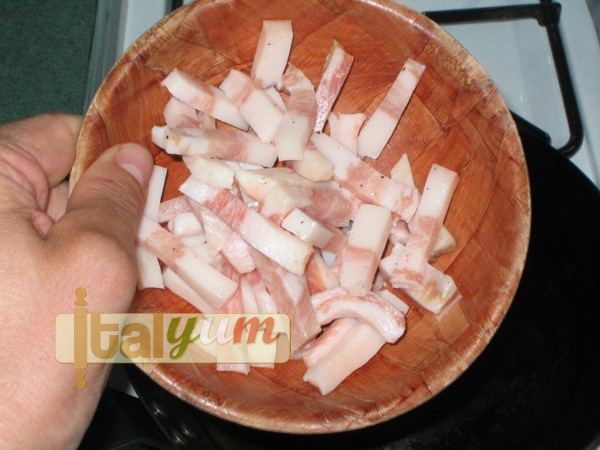
- Then, remove the plum tomatoes from the can and put them into a container.
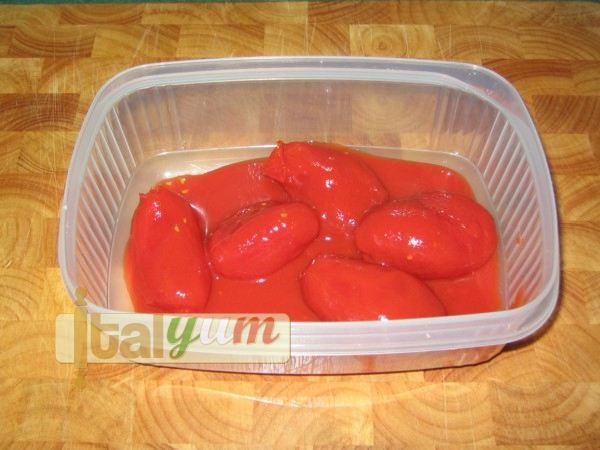
- Break the plum tomatoes with whatever comes to hand.
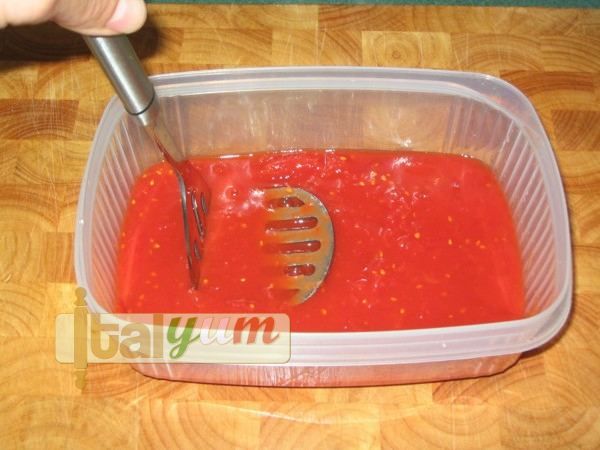
- Take a frying pan (ideally an iron pan) and pour the extra virgin olive oil into it. Swirl the pan around so that the oil will evenly coat the pan. The fat (olive oil or pork lard) should be minimal, just to allow a thin coating, because after, when we add the guanciale, some of the fat contained in the guanciale will melt, adding extra fat to the pan. Now, heat the oil on medium heat.
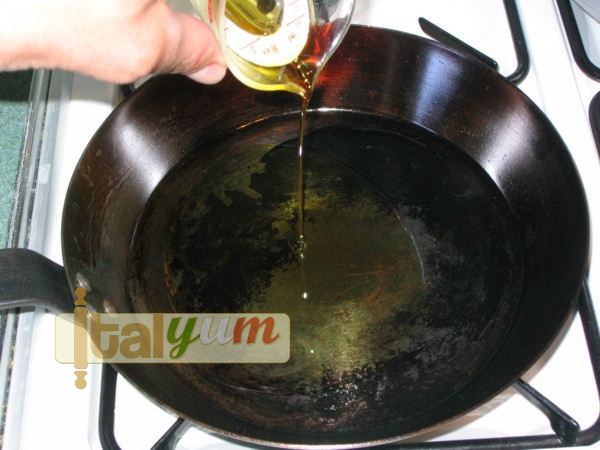
- When the oil is hot, add the chilli. Do not break the chilli in many pieces; just break it into two, so that it will be easier to remove it from the pan at a later stage.
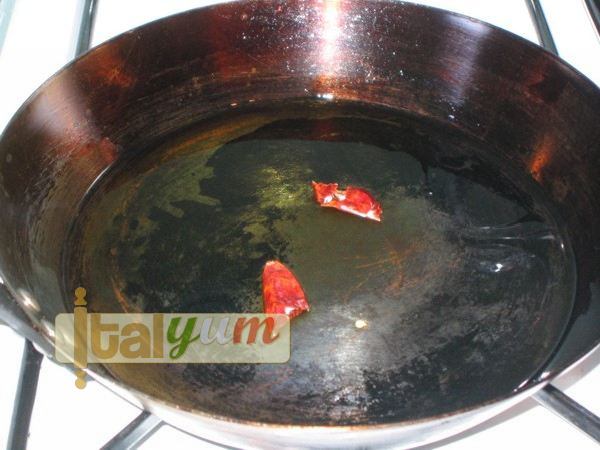
- Add the guanciale into the pan and turn the heat to low.
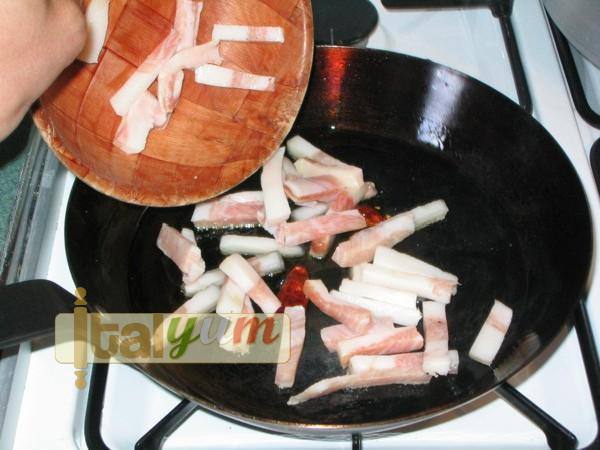
- Quickly stir with a wooden spoon, so that the guanciale sticks are turned as well, to allow an even frying.
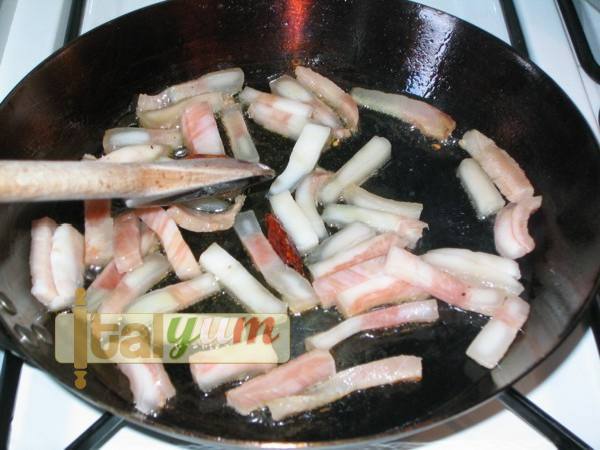
- After about a couple of minutes, the guanciale sticks should turn to a golden colour. This is the critical stage because frying for longer would dry the guanciale too much, making it too crispy, which is not good for the amatriciana sauce.
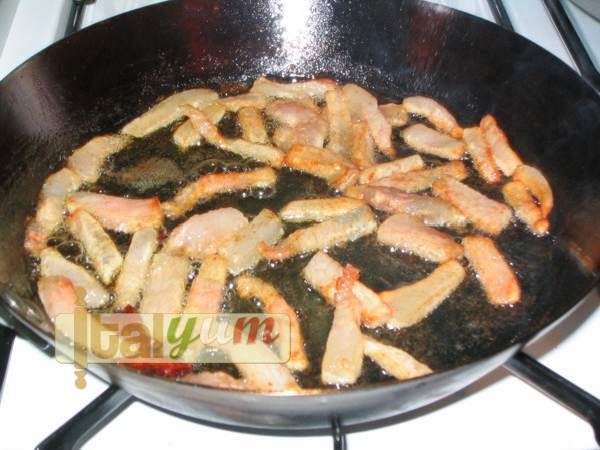
- So, we stop the frying process, adding the tomatoes to the pan.
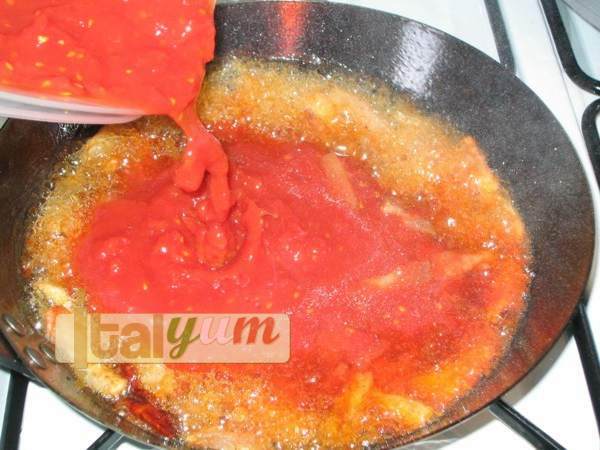
- Give it a good stir and simmer for about 10-12 minutes, which is the time you need to cook the spaghetti. During this time stir every now and then.
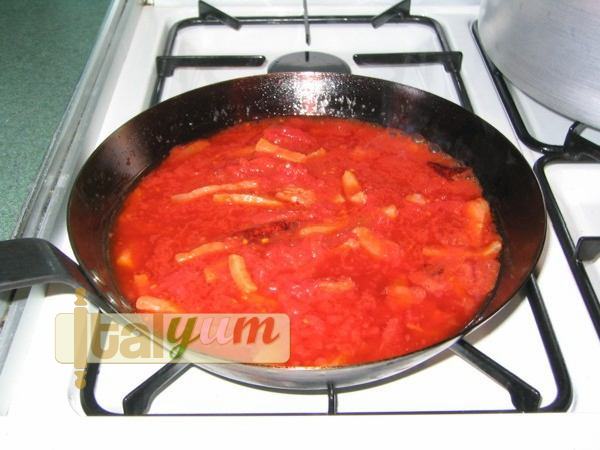
- Now, “butta gli spaghetti” (throw the spaghetti in) and boil the spaghetti according to instructions given on the packet. Remember to cook the spaghetti “al dente” and to use 10g (1/3 ounce) salt for each litre (4 1/8 cups) of boiling water.
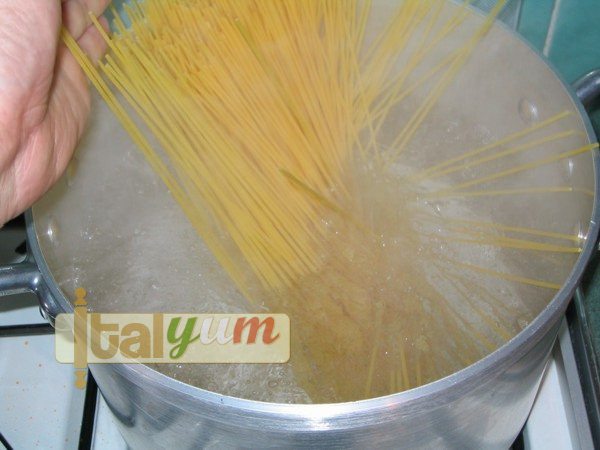
- A few minutes before the end, check the seasoning and add some salt according to your taste.
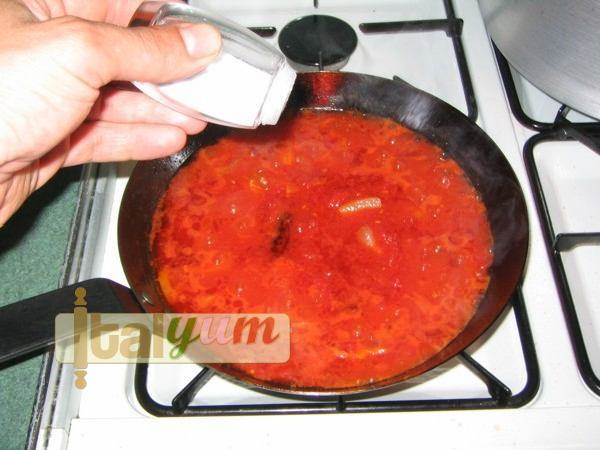
- Also, remove and discard the chilli.
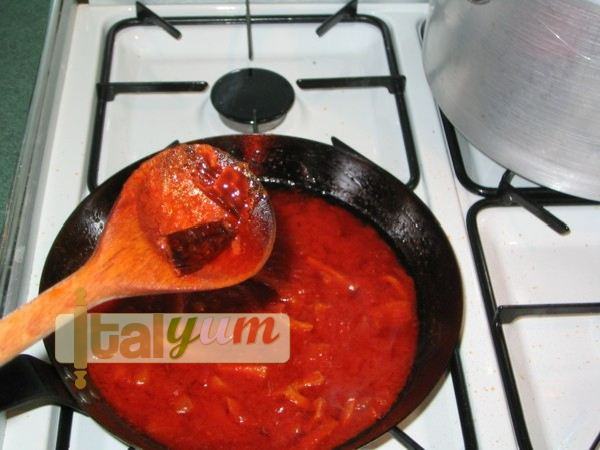
- Now, the sauce is ready to top the spaghetti.
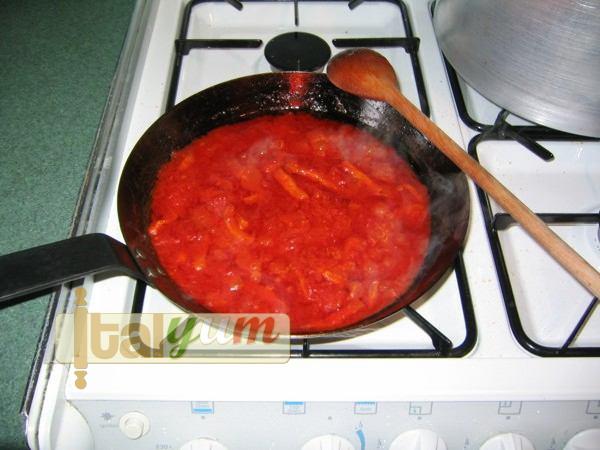
- When the spaghetti is cooked “al dente”, drain it into a colander and put the spaghetti back into the big pan you have used to cook it.
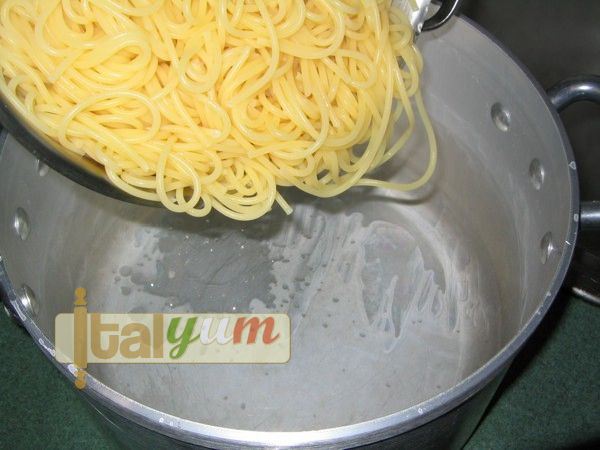
- Add the amatriciana sauce into the pan.
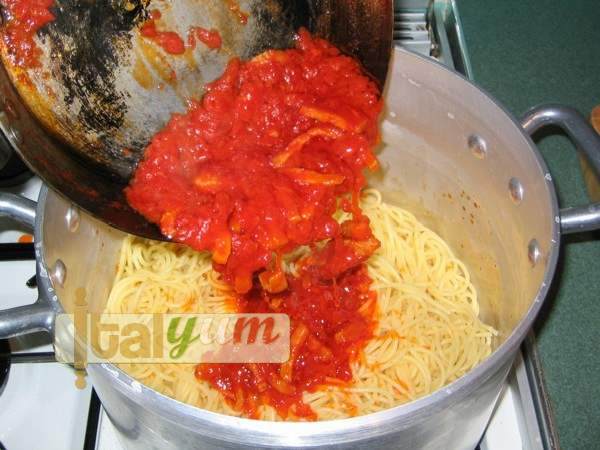
- Stir to evenly coat the spaghetti.
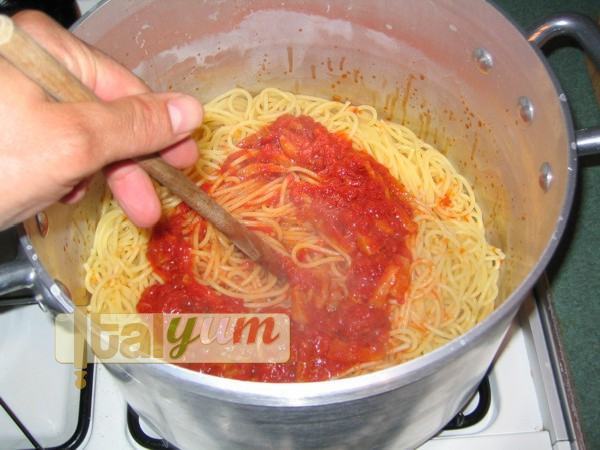
- Add half of the Pecorino cheese into the pan and stir. Keep the remaining Pecorino cheese for the serving.
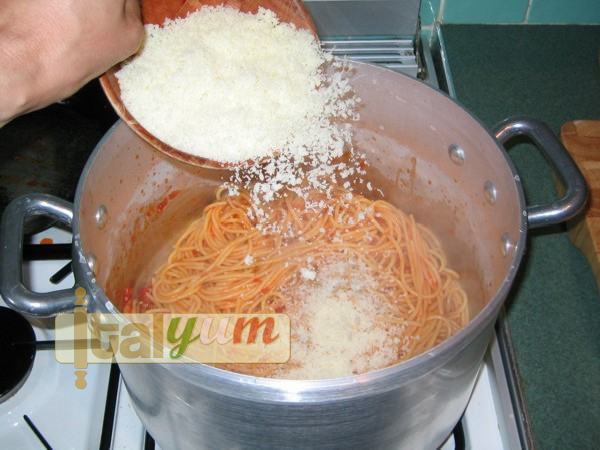
- Plate the spaghetti, add some extra Pecorino cheese on top and enjoy this fab spaghetti all’amatriciana.
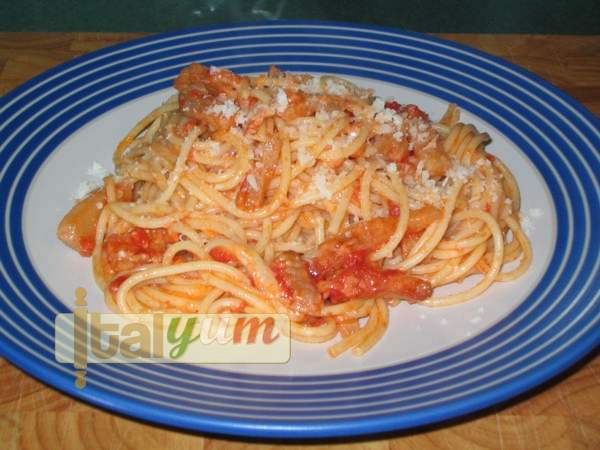
Nutrition
Calories: 650kcal
Tried this recipe?Let us know how it was!



